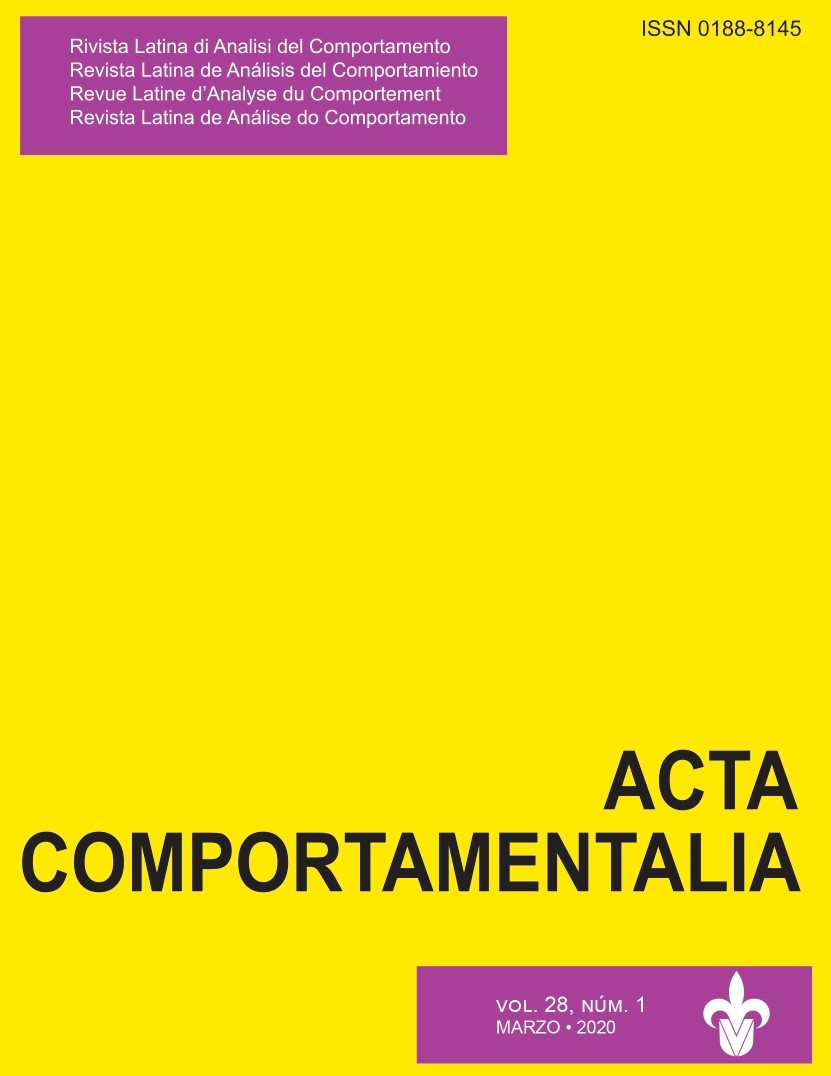Emergência de intraverbais com crianças autistas após ensino de relações de ouvinte
DOI:
https://doi.org/10.32870/ac.v28i1.75187Keywords:
Verbal Behavior, Intraverbal, Listener Relation, Conditional Discrimination, Autism Spectrum Disorder.Abstract
In general, the lower the development of intraverbal behaviors, commonly used in conversational interactions, the greater the impairment in the acquisition of academic and social skills. Children with Autism Spectrum Disorder (ASD) often achieve simple intraverbal behavior development but fail to achieve complex intraverbal learning. For example, a child with ASD may respond to “What is your name?”, but may struggle to respond to “What animal has a long neck?”. This latter example is called in the literature verbal conditional discrimination, because the individual has to respond vocally under the control of two verbal stimuli (animal and long neck), one being the sample and the other being the comparison. Simple and conditional discriminations are particularly relevant to intraverbal relations; the first concerns the evoked response in the presence of only one verbal stimulus; in the second, the response must be under the control of two or more verbal stimuli. A previous study has shown partial emergence of intraverbal responses after conditional discrimination learning for the same stimuli with five to 15-year-old participants with ASD. Therefore, this study aimed to verify the effects of teaching listener responses with conditional discrimination trials on the emergence of intraverbal responses (in the form of answering questions) in three children with five and six-year-old with ASD. A pre and posttest experimental design with control questions were used. All phases of the study were carried out in the participants’ home, in a bright place, with a table and two chairs, without noise and with the presence of the parents. Initially, a protocol of eighty intraverbal responses and a probe with ten questions were individually applied to each participant in three baseline sessions. Three questions that none of the participants responded correctly were selected for the teaching phases. The other seven questions served as controls. Then the participants were exposed to conditional discrimination teaching using matching-to-sample (MTS) trials between dictated names and pictures and between dictated questions and pictures with continuous reinforcement and a tact test for the pictures in extinction. Finally, the ten questions were reapplied. To allow errorless learning, teaching with MTS started with blocks in which there was only one sample stimulus and one comparison in all trials and gradually increased the complexity to blocks with three sample stimuli and three comparison stimuli. The results indicated that intraverbal responses emerged for the three questions used in the teaching phases for all participants, but not for the control questions that participants responded incorrectly to during baseline. We discuss the transfer of control from listener response to intraverbal speaker responses, considering results from previous studies and Skinner’s affirmation that learning one verbal operant does not lead to the emergence of other operants. The promising results may have been a function of the antecedent stimulus in the listener’s teaching being identical to the antecedent stimulus for the emergent intraverbal responses.
Downloads
Downloads
Published
How to Cite
Issue
Section
License

<a rel="license" href="http://creativecommons.org/licenses/by-nc-sa/4.0/"><img alt="Licencia de Creative Commons" style="border-width:0" src="https://i.creativecommons.org/l/by-nc-sa/4.0/88x31.png" /></a><br />Este obra está bajo una <a rel="license" href="http://creativecommons.org/licenses/by-nc-sa/4.0/">licencia de Creative Commons Reconocimiento-NoComercial-CompartirIgual 4.0 Internacional</a>.






